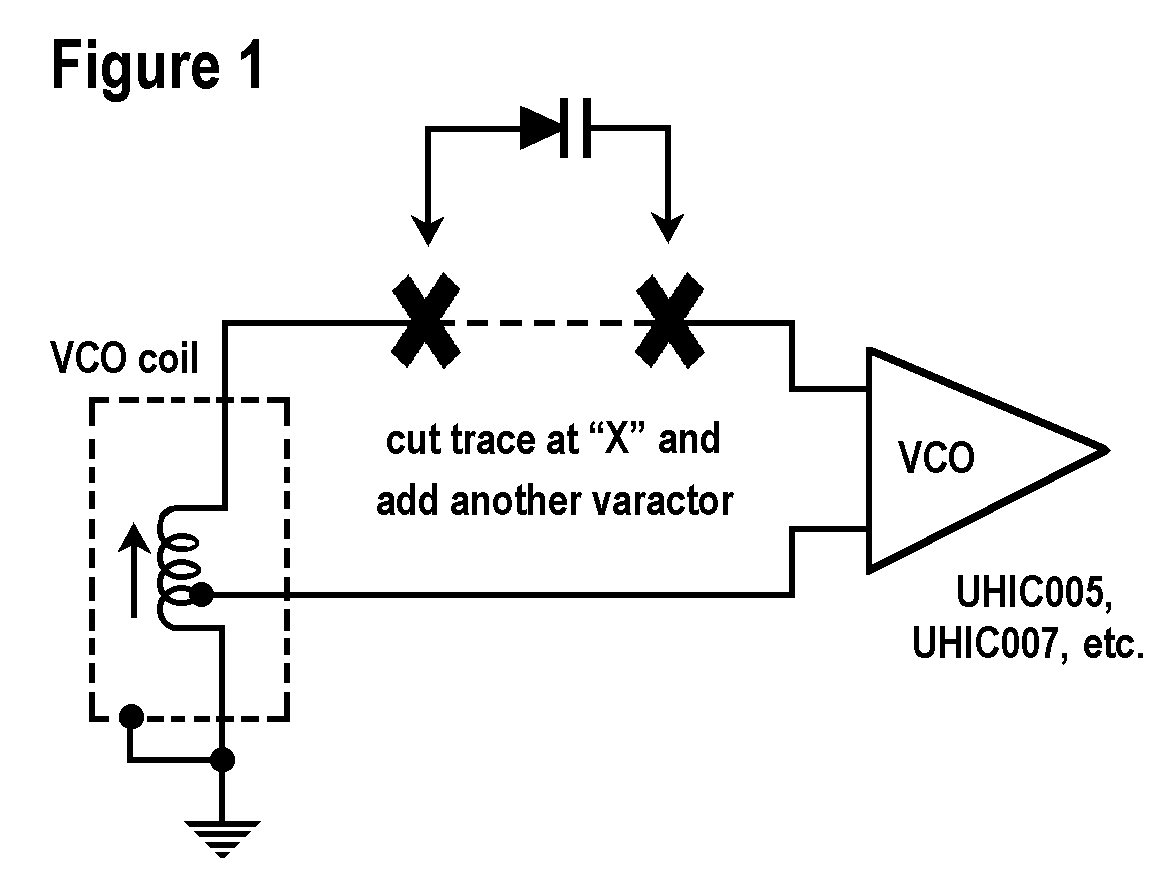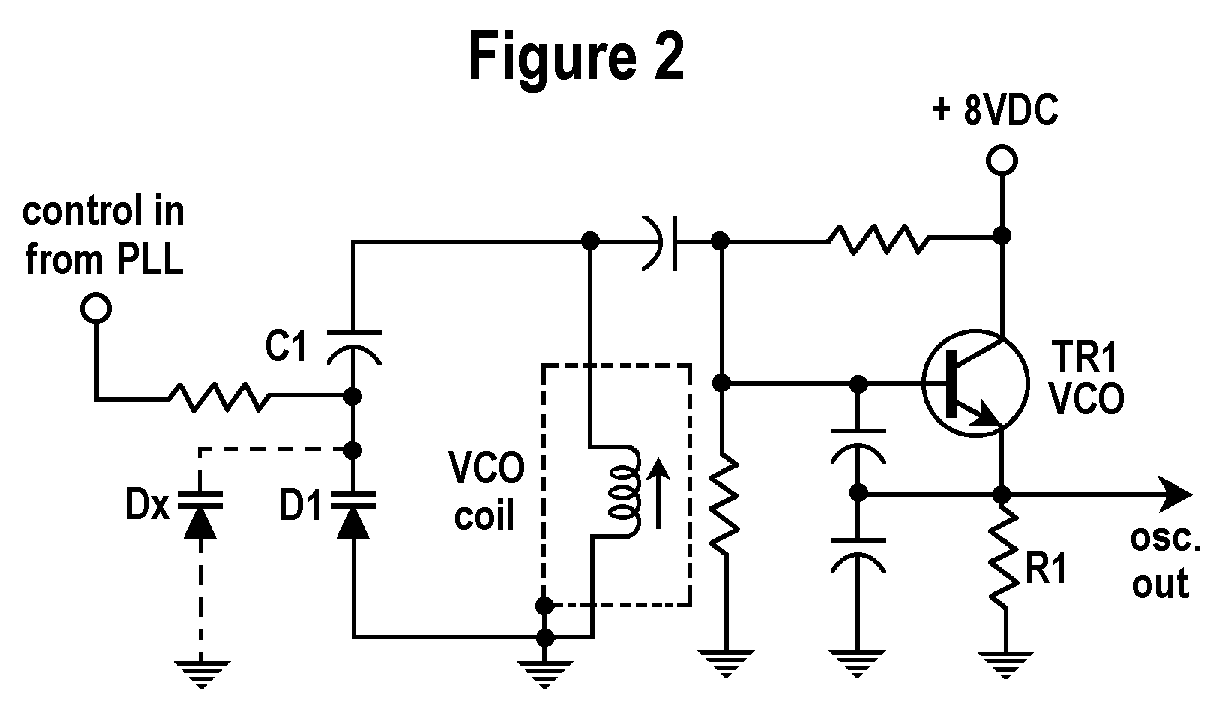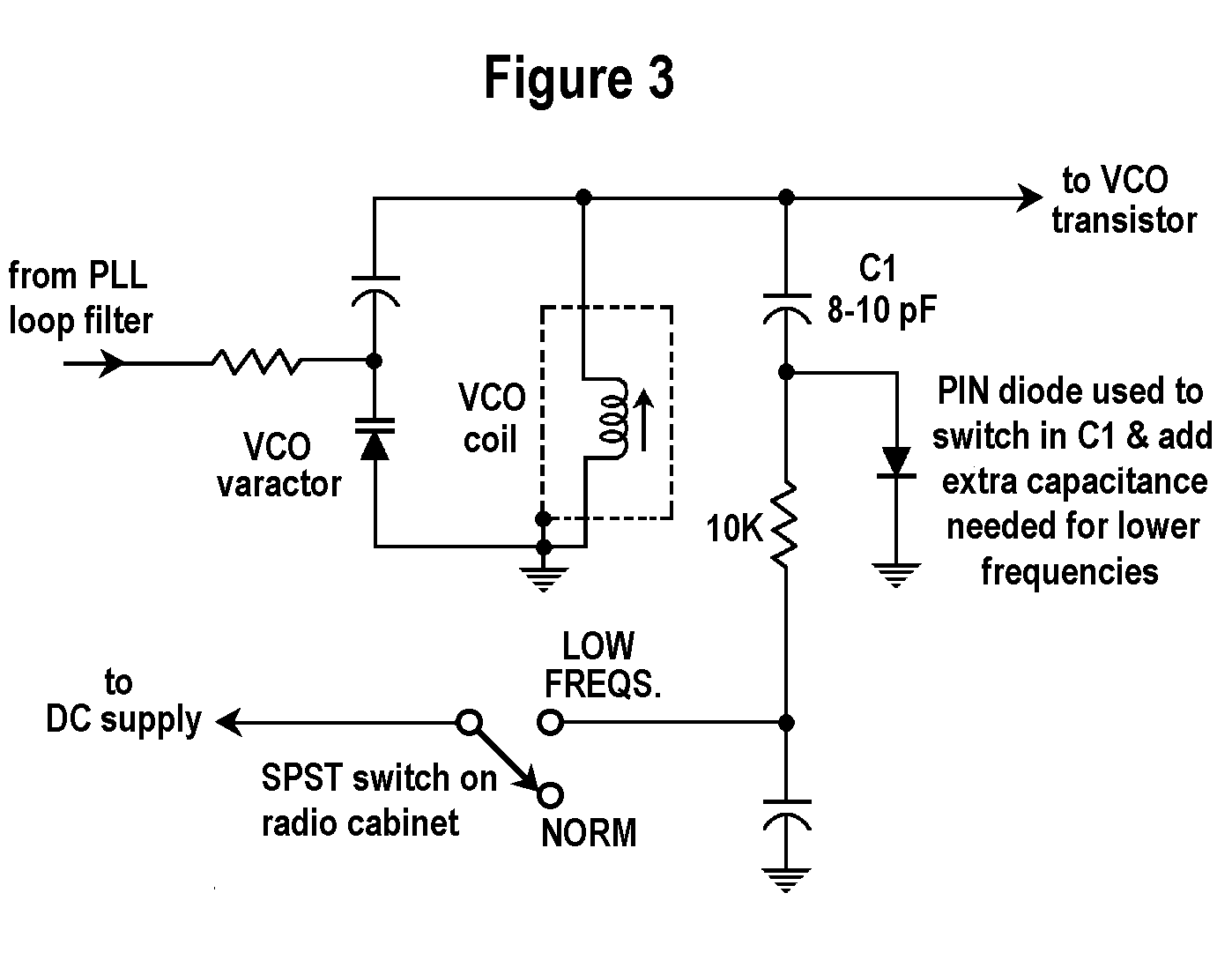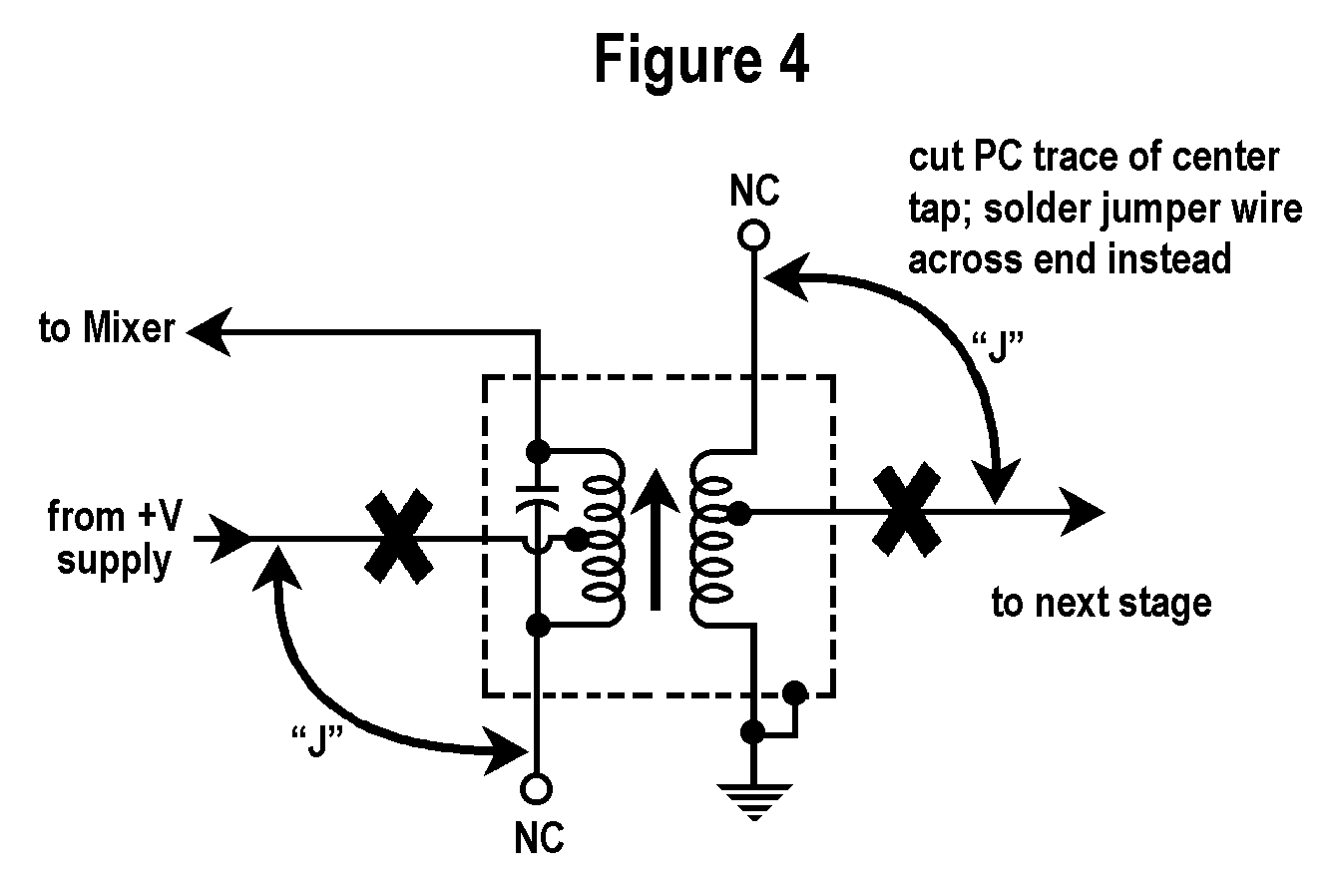
NOTE: For a printable copy of this article in Adobe PDF format, click here.
Many CB radios can easily cover at least 1 MHz (100 channels) with little or no retuning. Many operators though insist on 120 or more channels, and this often requires some broadbanding tricks. The two biggest reasons for poor tuning bandwidth in CBs are:
1. The VCO won’t
cover the range.
2. The TX mixer stages are too sharp.
Generally the receiver sections can cover up to 2 MHz with little loss in sensitivity. It’s the transmitters that are narrow. The TX mixers are intended to clean up the signal and eliminate harmonics and spurs before power amplification. So they must meet minimum FCC specs for spectral purity and harmonic filtering. These circuits have very high “Q” coil tuning. The reason the export models are so broad is exactly because they’re illegal in the first place! The following tips may help you solve these problems.
First, determine which circuit is actually quitting. Many VCOs are actually quite broadbanded, and the real problem is in the TX mixer tuning. Determine exactly where the TX quits. Then check the VCO with a good Frequency Counter; you may be surprised to find it’s still running just fine.
![]()
VCO BROADBANDING TRICKS
1. Replace the VCO coil’s core with one of less permeability to lower its “Q.” If the VCO uses the type of circuit with a variable capacitor and fixed inductance instead of a tunable inductance, add a small core to the fixed coil.
A “cheap & dirty” trick that often works is to simply cut off some of the core length. Unscrew the core, then carefully snip off about 1/3 or 1/2 its length with diagonal cutters. Screw it back into the coil and retune. You can use the screw cores from a junker CB, or buy cores from places like AMIDON; see address at end.
2. See FIGURE 1. In the older SSB Unidens that had an IC type VCO like the UHIC005 or UHIC007, try adding another varactor (ECG/TCG611, -12, -13, -14) in series with the input. This can dramatically increase the tuning range.

3. See FIGURE 2. Many VCO varactors (like D1 below) specify only about 12-33 pF maximum capacitance. Try adding another small varactor (“Dx”) directly in parallel across the existing one. This trick is also used in many export rigs like the common Galaxy-Ranger type chassis. Two varactors in parallel give more range than just one.

4. Also in FIGURE 2 try replacing fixed disc capacitor C1 (typically 33 pF or 47 pF) that’s in series with the varactor. Try a .001 µF instead. This changes the capacitance ratio between the two, so that the varactor now has a much greater effect on frequency than the fixed capacitor.
5. If the VCO uses a discrete transistor like TR1 (2SC1675L or similar) for its oscillator, try lowering the value of Emitter resistor R1 (typically 1KW) to about 220W. This increases the stage gain.
6. “PIN” diodes (FIGURE 3) make excellent RF switches. Use a PlN diode (MPN3401, ECG555, SK9150A) at the VCO coil to control C1, a small parallel capacitance of 8-10 pF. This lets the VCO tune normally at the higher frequencies, then adds extra capacitance at the lower frequencies without having to retune the VCO itself.

![]()
TX MIXER BROADBANDING TRICKS
If the VCO is OK but the TX mixer quits, there are several possible cures.
1. Many mixer coils have a center tap. Often they only use the center tap and one end, with the other end left unconnected. Eliminate the center tap by cutting its PC trace, then jumper around to the unused end of the winding instead. This allows the full winding to be used, which lowers the coil “Q.” See FIGURE 4.

2. Pad the coil with some small parallel resistance across the ends, about 1KW to 4.7KW. If this works but lowers the stage gain too much, compensate by increasing the gain of the following stage. Lower the value of the next stage’s Emitter resistor, or substitute a different transistor having a higher gain at that stage.
3. Replace the core of the mixer coil with one of less permeability to lower its “Q.” You can use the same “cheap & dirty” trick described above for the VCO broadband; i.e., cutting off some of the slug length.
4. As a last resort only, replace the mixer cans with coils known to have lower “Q.” For example, the broader 16 MHz coil is the LA166. The 27 MHz coils to try are the LA350 and the LA220. These all have the same internal wiring configurations, so you should be able to remove the existing coil and solder in the new one. You can probably still get these coils from Cobra or Uniden.